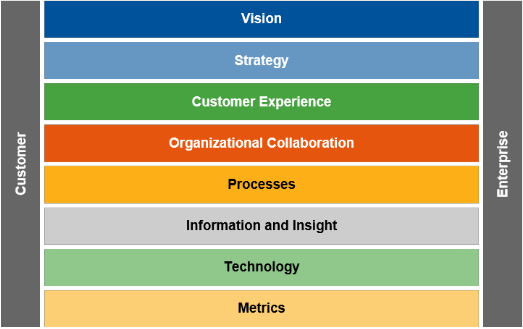Planning for Relationship Management
Our CRM architect can help you to analyse the business processes and roles that will work for you, and can advise on the technical configuration, data models, and procurement options to support these processes.
More than just technology
Relationship management projects are often seen as ‘technology’ projects as they involve the implementation of a CRM system, but in reality they have 4 dimensions, which are:
- people
- processes
- technology
- data
A successful relationship management project will take a balanced approach to these and understand that relationship management requires cross‐functional, stakeholder-focused business process re‐engineering, effective change management and senior stakeholder buy-in.
A structured approach
Based on Gartner’s ‘8 Building Blocks for CRM’, the following points should help you approach Relationship Management projects in a structured way.

- Vision – What will relationship management and the use of a CRM platform help you to achieve and what benefits will it bring to your stakeholders and your team?
- Strategy – Once you know what you are trying to accomplish, your next step is to determine how you plan on reaching your objectives. Break your goals down into smaller, achievable objectives, and then map out how and when you plan to complete these steps. This strategy should be flexible, allowing for revision along the way.
- Consider your Stakeholders (Customer Experience) – What changes are you hoping to make to your relationship with your stakeholders? How do you want to be perceived and what sort of service will you offer?
- Collaboration – It is unlikely that your service will exist in isolation, so who do you need to inform or engage with to maximise the chance of success? Do you have senior stakeholder buy-in?
- Processes – Understanding your processes and identifying opportunities for improvements before looking to implement technology to support your Relationship Management is essential.
- Information - Collect the right data and make sure it’s compliant and secure. Do you already have data that you need to clean and import?
- Technology – The relationship management solutions provided by the University should help you to manage data and information, integrations, IT infrastructure and architecture.
- Metrics – What will you need to report on? How will you use the data in your CRM to make decisions?
Who to talk to / find out more
Please contact Jason Murphy (CRM Architect) in the first instance to discuss your requirements.

